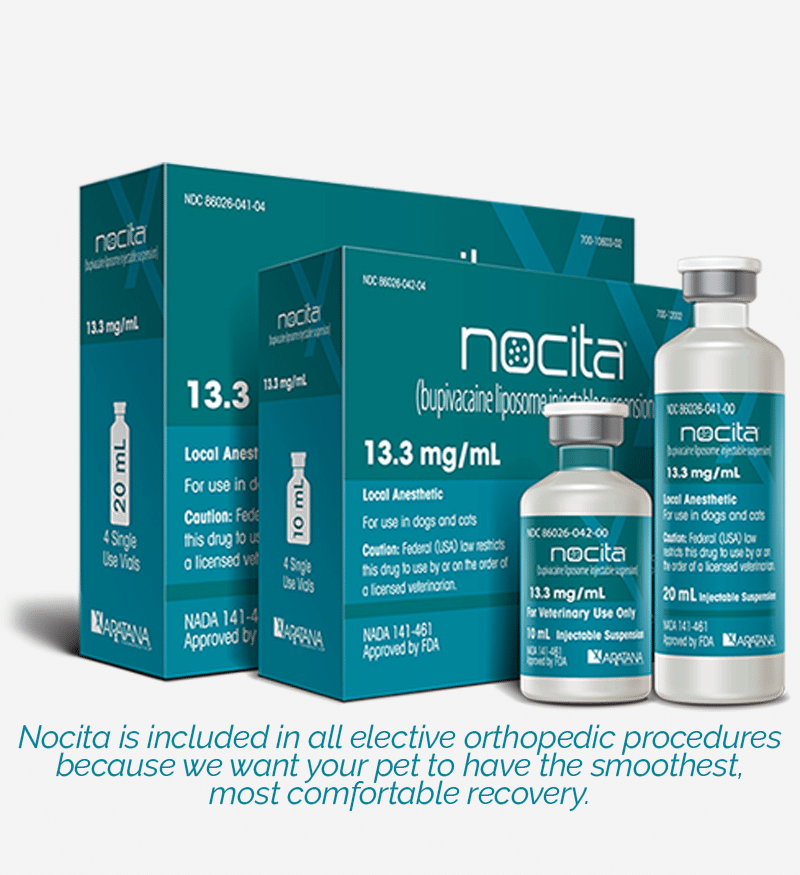Presurgical Premedication Protocols:
ORTHOPEDIC PROCEDURES:
- A full Mu opioid with a sedative or tranquilizer (acepromazine, midazolam or valium)
- Hydromorphone 0.05 – 0.1mg/kg and Acepromazine 0.03mg/kg IV or IM
- Morphine 0.5mg/kg – 1mg/kg and Acepromazine 0.03mg/kg IV or IM
Torbugesic 0.1 – 0.5 mg/kg can be used as premedication with a sedative or tranquilizer, however, the above opioids should be given during recovery and postoperatively.
SOFT TISSUE PROCEDURES:
- Buprenorphine 0.01mg/kg +/- acepromazine or valium for extra-abdominal procedures
- Hydromorphone 0.05mg/kg – 0.1mg/kg and valium 0.2mg/kg IV for abdominal procedures
- Morphine 0.5mg/kg – 1mg/kg and valium 0.2mg/kg IV for abdominal procedures
Torbugesic can be used as premedication with a sedative or tranquilizer, however, the above opioids should be given during recovery and postoperatively.
BRACHYCEPHALIC PATIENTS:
- A lateral and VD (2 view or 3 view) thoracic radiographs pre-op (within 1 week of surgical procedure)
Before you give sedatives:
- Metoclopramide 0.2 mg/kg SQ or Cisapride 0.1 – 0.5 mg/kg PO
- Famotidine 1 mg/kg IV or Omeprazole 1mg/kg PO
- Maropitant 1 mg/kg SQ or IV over 1-2 minutes or Odansetron IV
Atropine preoperatively 0.01-0.02mg/kg if our resting heart rate is 40-60 bpm to counteract vagal tone
- Hydromorphone 0.05 – 0.1mg/kg and Acepromazine 0.03mg/kg IV or IM
- Morphine 0.5mg/kg – 1mg/kg and Acepromazine 0.03mg/kg IV or IM
- Buprenorphine 0.01 mg/kg and Acepromazine 0.03mg/kg IV or IM
- Valium or midazolam 0.2mg/kg can be used in place of acepromazine, but not if an airway function exam is needed
- Dexamethasone 0.25 mg/kg IV (airway surgery only) with premedication, then post-operatively prn
Torbugesic can be used as premedication with a sedative or tranquilizer, however, the above opioids should be given during recovery and postoperatively. If the procedure(s) are not invasive then buprenorphine is preferred to avoid more respiratory or GI side effects from full Mu agonists.
Postoperative BOAS patients should recover in ventral recumbency with their head elevated and a designated veterinary technician to monitor them during the entire recovery phase. They should be intubated as long as possible to ensure they are completely awake and able to swallow/chew. Medications to consider dispensing include anti-inflammatories, antiemetics (liquid maropitant) and proton pump inhibitors (liquid omeprazole).


